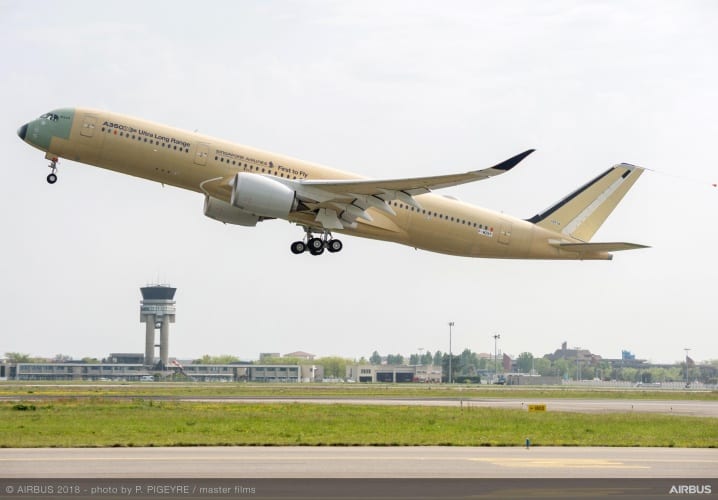
The Ultra Long Range Airbus A350 XWB made a short maiden flight from Toulouse-Blagnac Airport as part of a test programme that should see a range of efficiency improvements certified. These modifications to the standard A350-900 include a fuel system that increases capacity by 24,000 litres without the need for additional fuel tanks, as well as extended winglets. The new A350 variant is powered by twin Rolls-Royce Trent XWB engines and has a maximum take-off weight (MTOW) of 280 tonnes.
Combined, the modifications will give the new aircraft a range of 9,700 nautical miles, topping that of current record holder, the Boeing 787-9 Dreamliner. Recently, the Dreamliner made headlines as the first commercial craft to fly non-stop from Perth to London, a flight that took 17 hours and 20 minutes. According to Airbus, the Ultra Long Range A350 XWB will be capable of flight times in excess of 20 hours, opening up new long–haul non-stop routes that have previously been beyond reach.
The first of those new routes will see Singapore Airlines fly direct for the first time from Singapore to New York, with the service due to start operating later this year. The airline has already ordered seven Ultra Long Range models, which will complement the 60 standard A350 aircraft it has planned for its fleet. So far, Singapore Airlines has taken delivery of 21 A350-900s.
While a recent order from Emirates Airlines guaranteed the production of Airbus’ A380 superjumbo for the next 10 years, the A350 XWB is likely to be the long-haul Airbus of choice into the future. Its carbon fibre fuselage and wings, alongside the fuel-efficient Rolls-Royce engines, promise a 25 per cent reduction in fuel burn and emissions, according to company. As of the March 2018, Airbus has received orders for 854 A350 XWB from 45 customers worldwide.




Glasgow trial explores AR cues for autonomous road safety
They've ploughed into a few vulnerable road users in the past. Making that less likely will make it spectacularly easy to stop the traffic for...